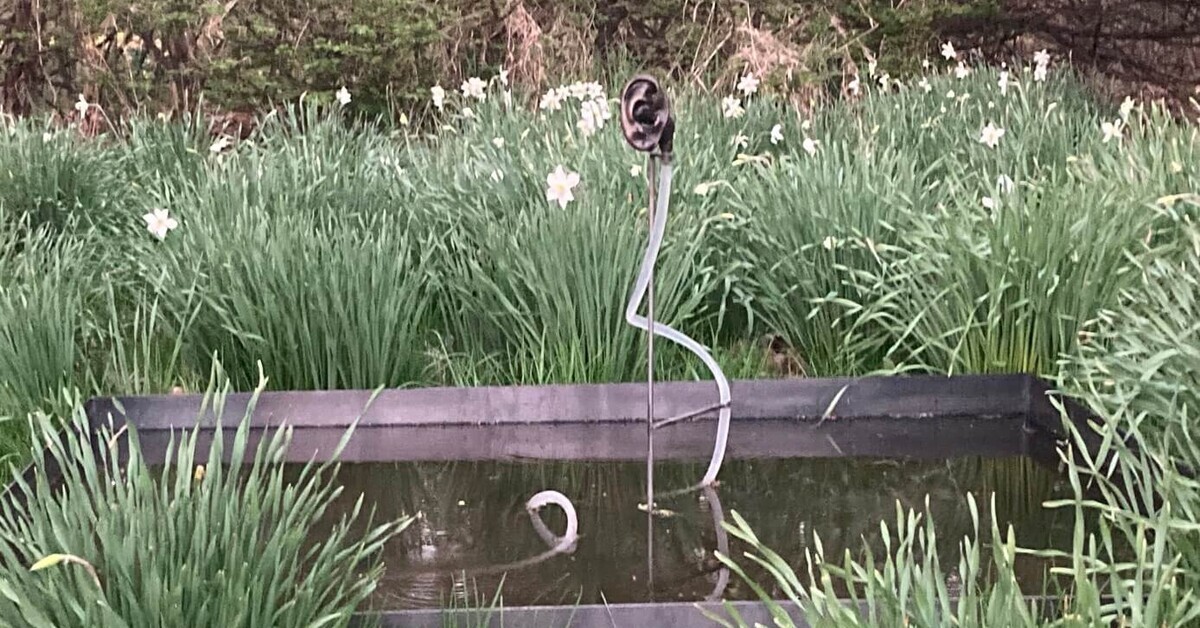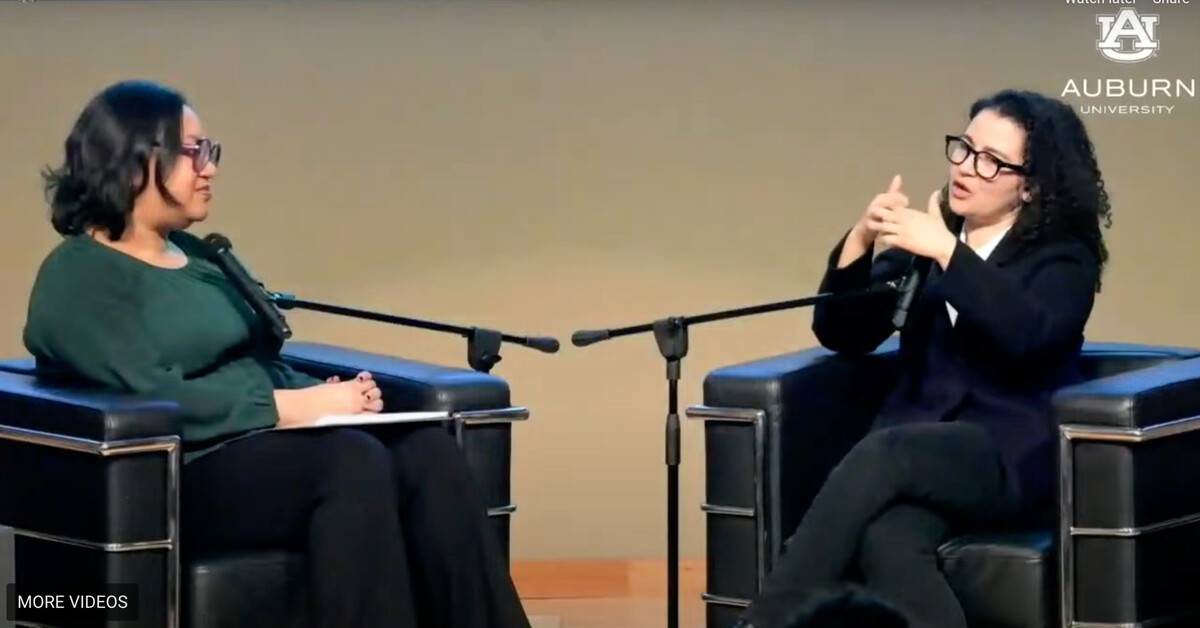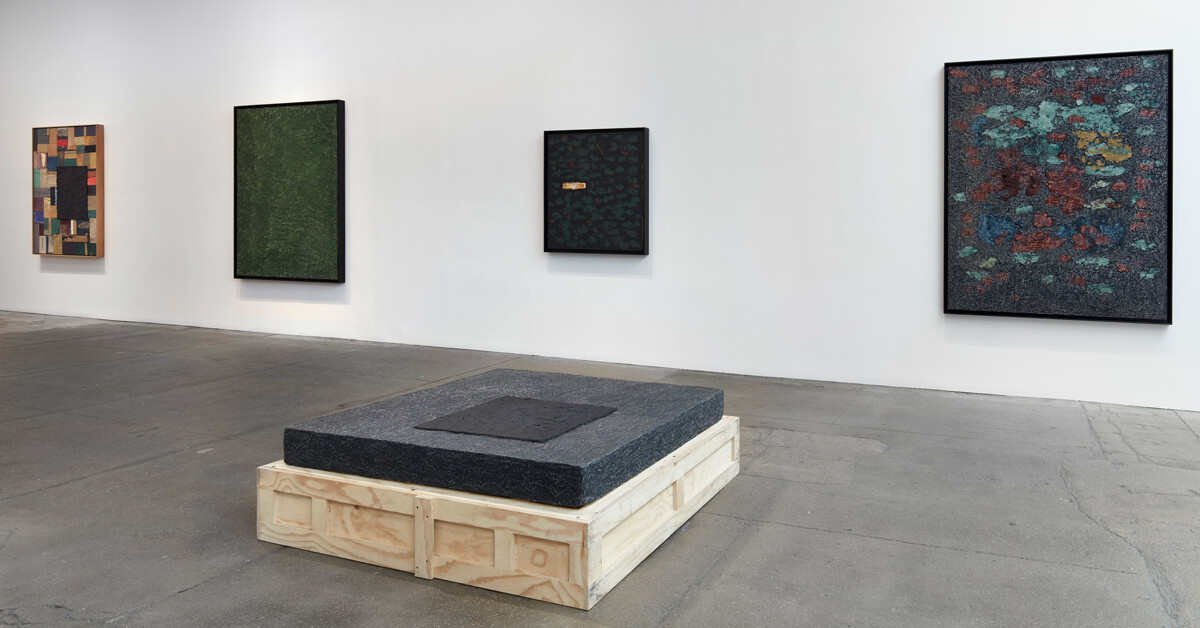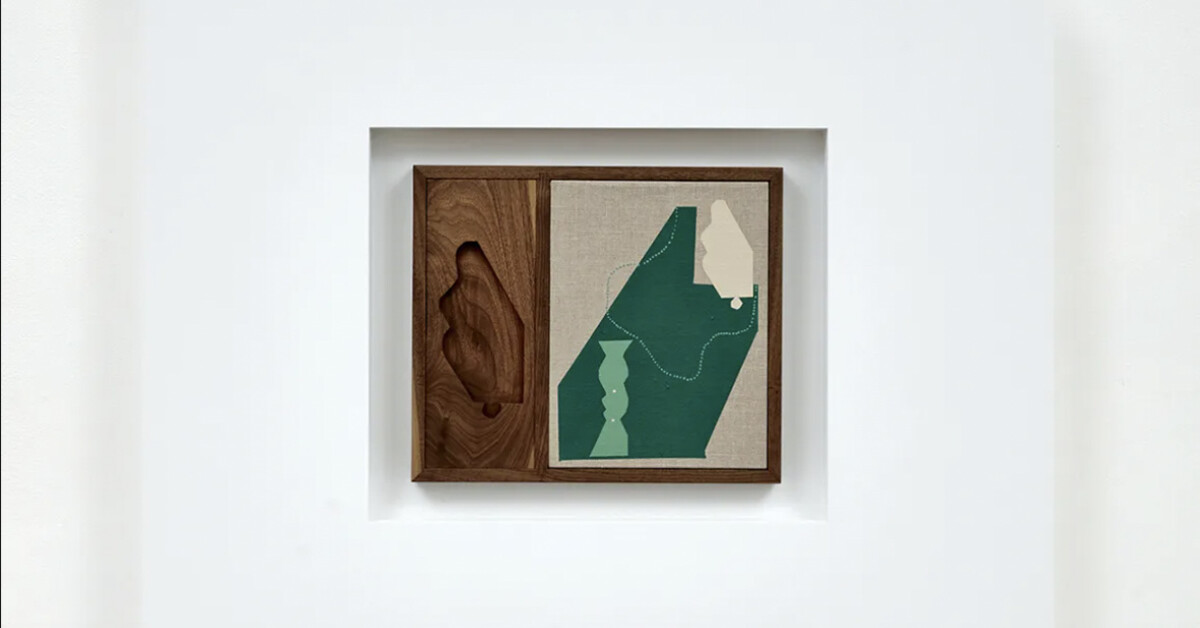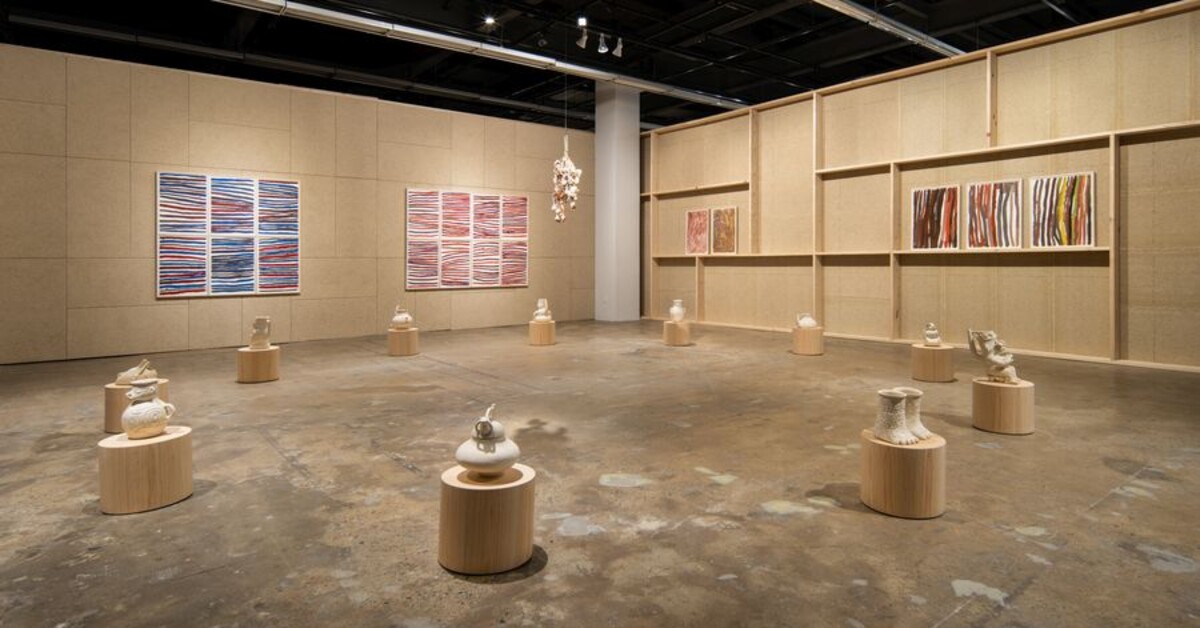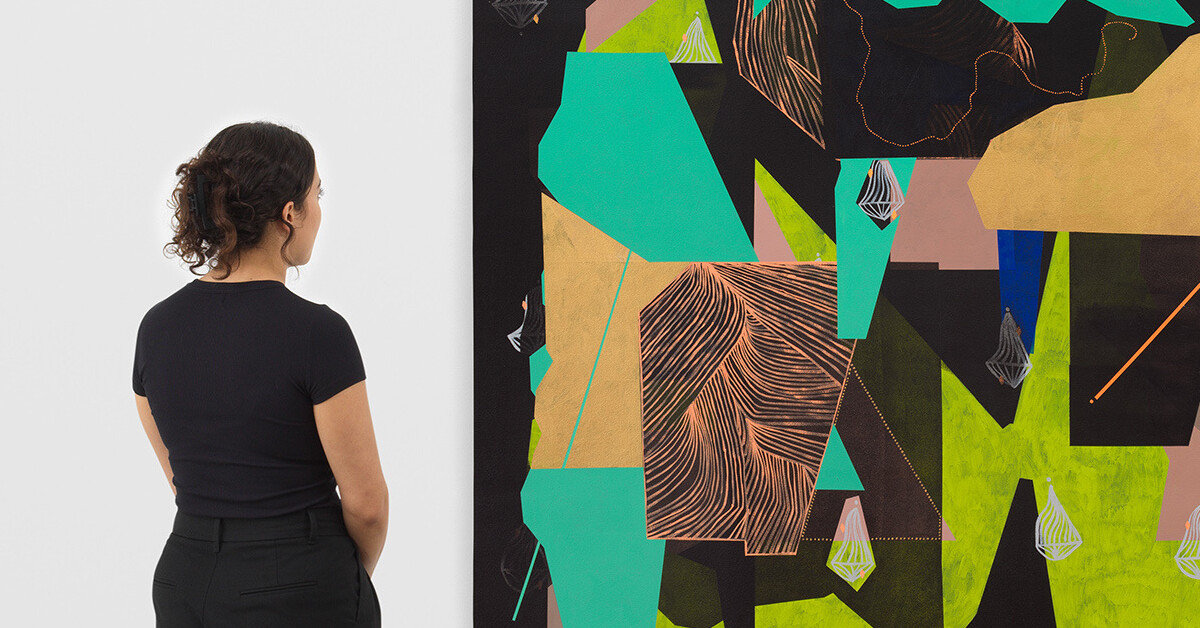Dozens of Artists, 3 Critics: Who’s Afraid of the Whitney Biennial 2024?
The New York Times / Mar 13, 2024 / by Jason Farago, Travis Diehl and Martha Schwendener / Go to Original
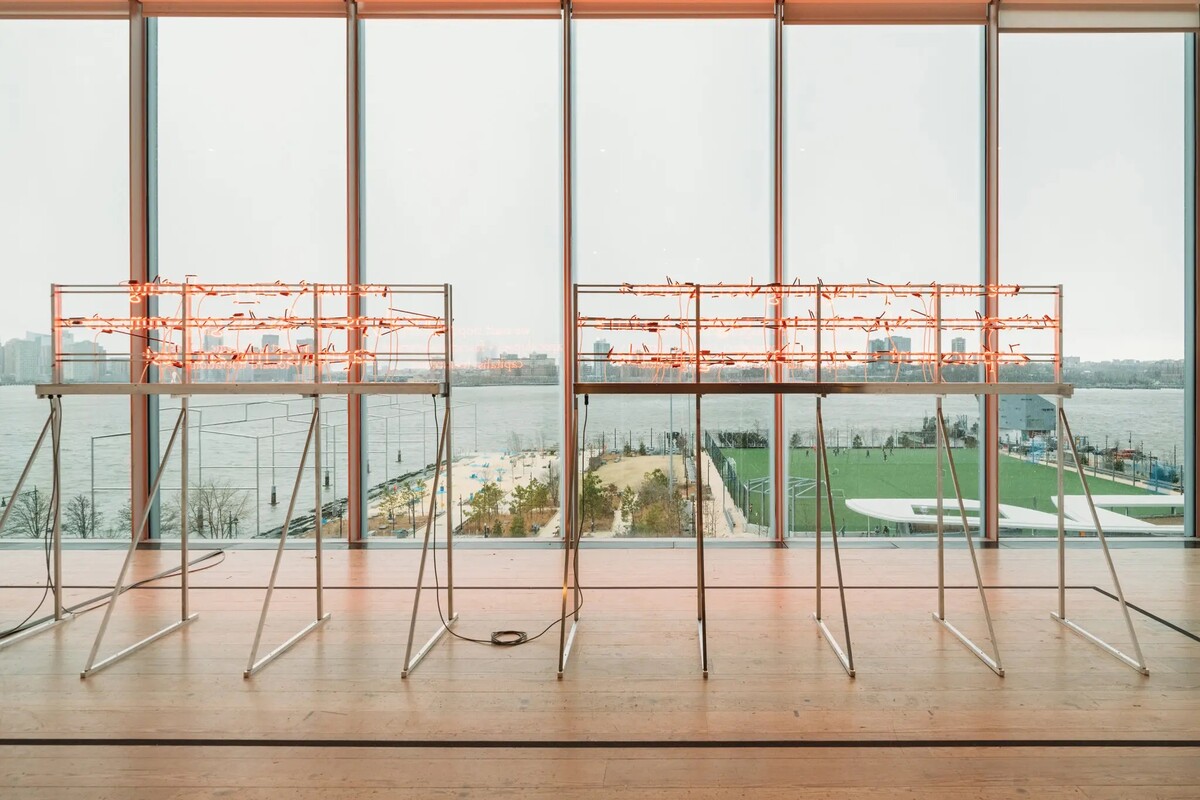
Demian DinéYazhi’ created an installation titled “we must stop imagining apocalypse/genocide + we must imagine liberation.” On Wednesday, museum officials said they were unaware that some flickering neon letters spelled out the message “Free Palestine.”Credit…Charlie Rubin for The New York Times
The Whitney Biennial, New York’s most prominent showcase of new American (or American-ish) art, thrives on argument: in print, in comment threads, in barrooms and sometimes in the galleries themselves. Its 81st edition opens Thursday to museum members and to the public on March 20, and it introduces a “dissonant chorus” — in the phrase of Ligia Lewis, a participating artist and choreographer — of young talents and veteran practitioners. We sent a dissonant chorus of our own to the Whitney Museum of American Art: three critics, each writing separately, on the highs and lows of the exhibition everyone will have an opinion about.
Jason Farago: The Beauty and the Cynicism
What can the Whitney Biennial be, now, so late after the end of modernism? Is it a grand intellectual battle, or just an insiders’ chinwag? A polemic, or a party? A get-’em-while-they’re-young (or while-they’re-old-but-underpriced) market showcase, the cultural equivalent of the N.B.A. draft? An atavistic society ritual, a debutante’s ball for the M.F.A. debtset? Choose your own metaphor, but one thing it cannot be is a summation of where art stands in the United States in 2024. When the larger culture is rudderless, and an avant-garde will not come again, the best you can offer — or so this year’s curators, Chrissie Iles and Meg Onli, seem to say — is a cross-section with a point of view. Their biennial is small, with just 44 artists and collectives across four floors of the museum and its outdoor spaces; another two dozen will screen films in the Whitney’s theater and, for the first time, on its website. Indeed, the show is small in other ways: resolutely low-risk, visually polite, and never letting the wrong image get in the way of the right position.
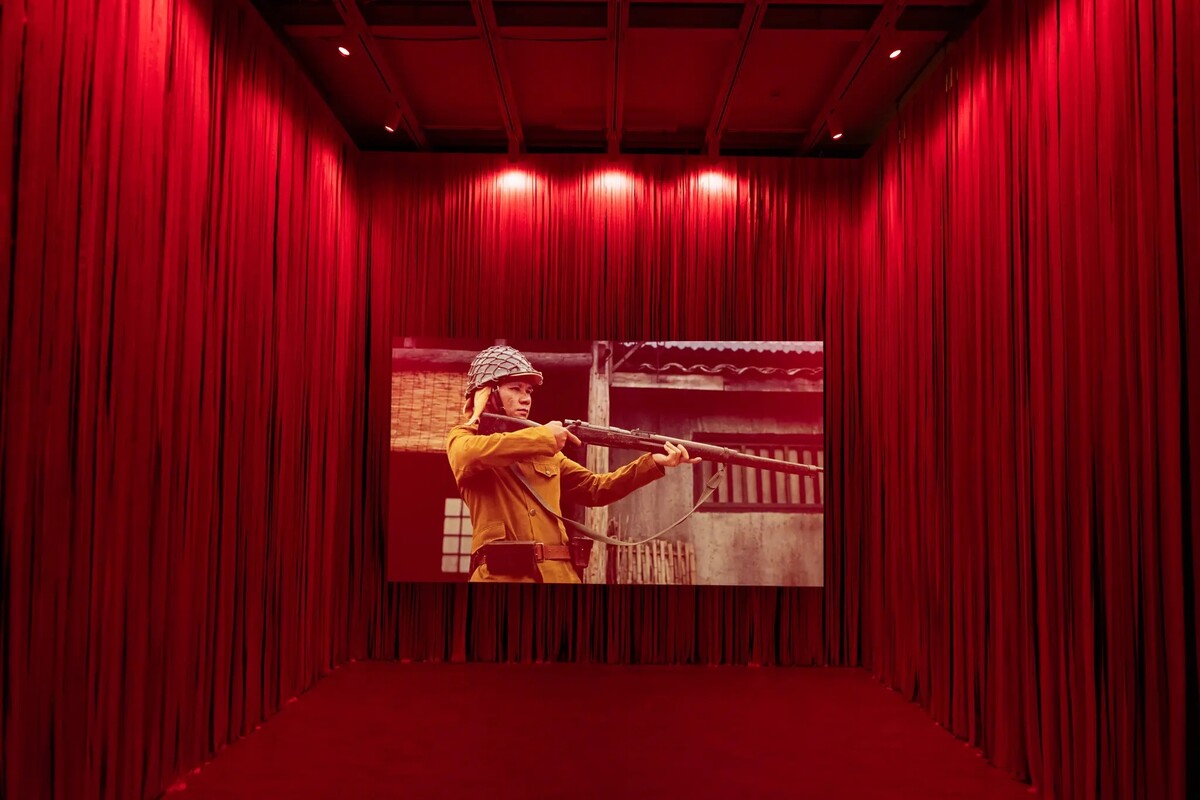
Installation of Diane Severin Nguyen’s film “In Her Time (Iris’s Version),” 2023-24, about a young actress struggling with her role in a (fictional) movie about the Nanjing Massacre. Jason Farago calls it “a vibrant case study” of the hazards of projecting the present onto the past.Credit…Charlie Rubin for The New York Times
If nothing else, the show does pinpoint some fashions. Autobiography and self-disclosure are out (and stay out!). The celebratory portraiture that has gummed up our galleries over the last five years is out, too. In place of the portrait, the hottest trend is landscape, though usually as harbinger of ecological collapse (in Dionne Lee’s silent black-and-white video “Challenger Deep,” the artist’s hands hold dowsing rods in search of water) or living record of colonial ravages (in Ligia Lewis’s short film “A Plot, a Scandal,” she and Corey Scott-Gilbert wear 17th-century wigs and dance among Italian cypresses).
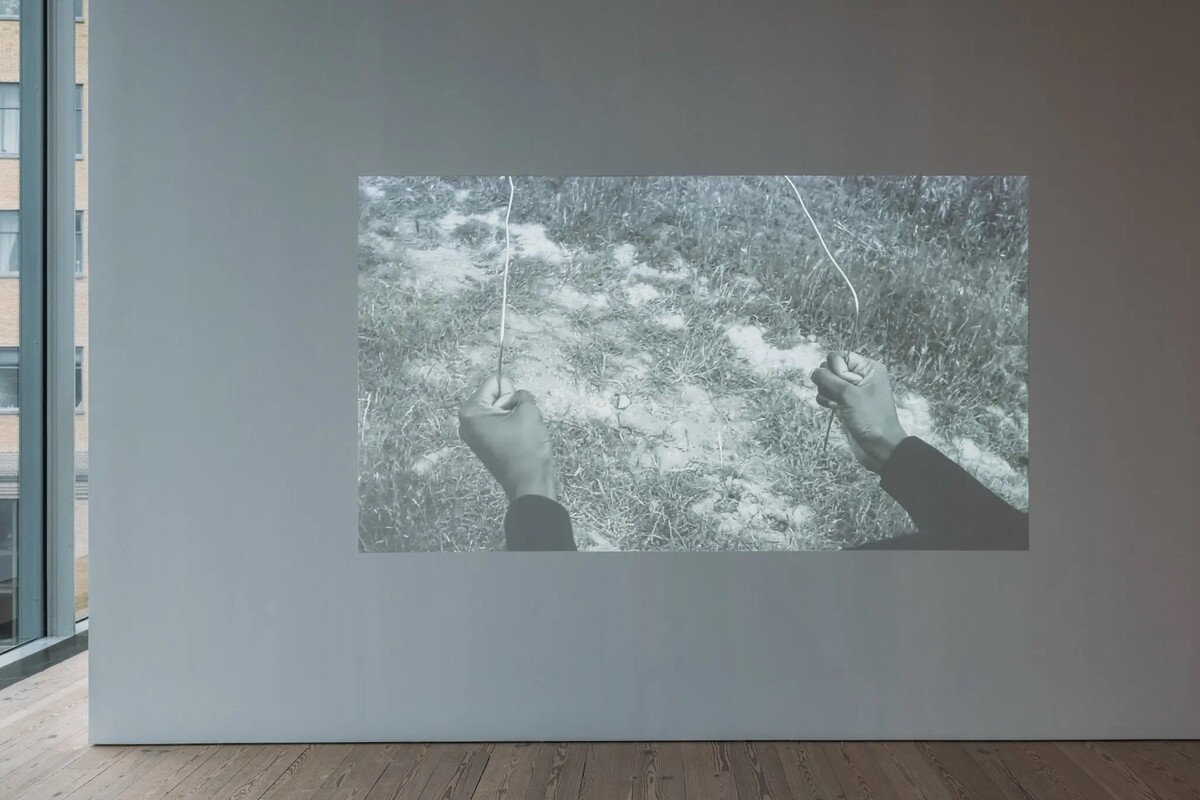
Dionne Lee’s video, “Challenger Deep,” 2019, with hands holding dowsing rods, highlights landscape as harbinger of ecological collapse.
Love the earth, says the 2024 Whitney Biennial, and decorate accordingly. When Iles, a veteran Whitney curator, co-organized the 2006 edition of this show, every other room had shimmering surfaces of silver and gray. Two decades on, the millennial glisten has given way to organic austerity; the dominant tones are now ocher and umber, turmeric and coffee. Dala Nasser drapes two-by-fours with bedsheets “dyed with iron-rich clay from the banks of the Abraham River” to create a makeshift temple. (The classical tradition remade from dregs and debris is a decades-old biennial staple.) Clarissa Tossin, in an overlong film shot partly in Guatemala, presents to us hand-spun brown and beige cotton whose natural dyes reflect, so its Maya weaver informs us, “the energies of the land.”
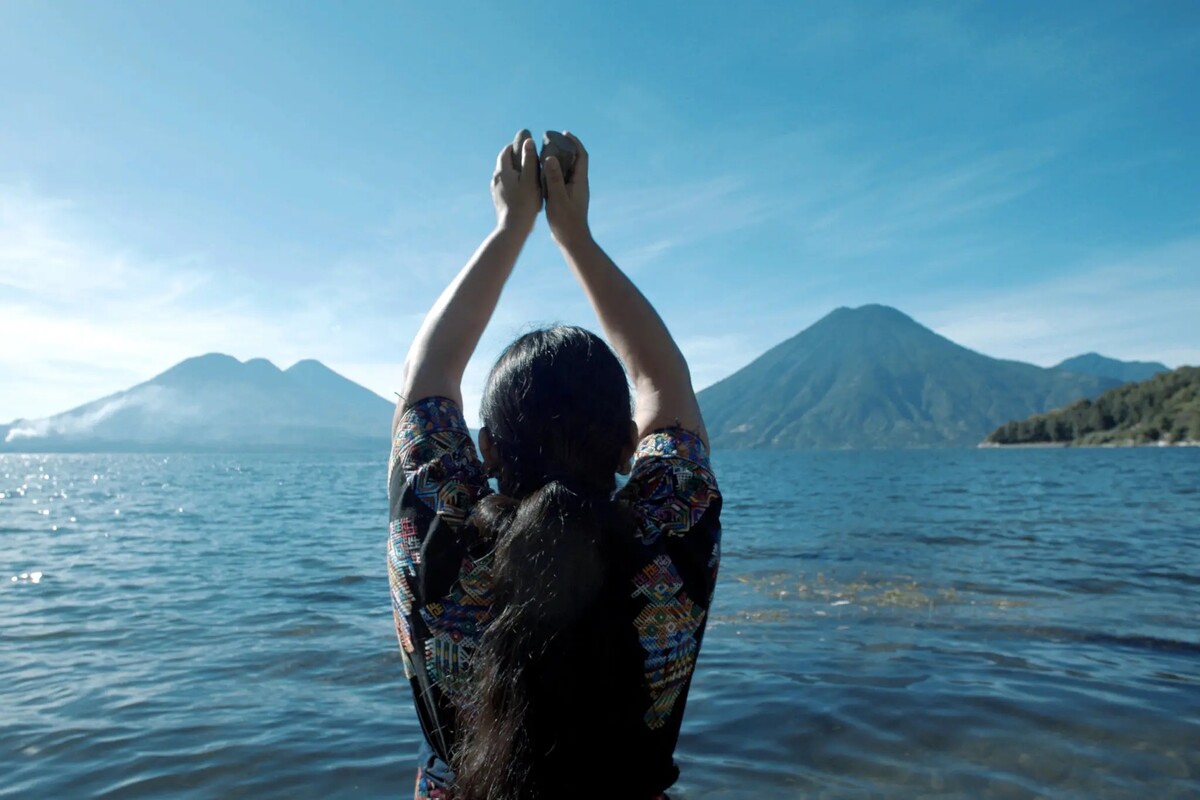
Still from Clarissa Tossin’s video, “Mojo’q che b’ixan ri ixkanulab’/Antes de que los volcanes canten/Before the Volcanoes Sing,” 2022.Credit…Clarissa Tossin; via Galeria Luisa Strina, São Paulo; and Commonwealth and Council
Hard not to make the obvious diagnosis: Artists emerging today are intelligent but terrified. Exhausted by culture’s surrender to the market, badly outmatched by Silicon Valley’s image regimes, they conclude that small-scale (and museum-compliant) acts of demonstration and recalcitrance are the safest bet. This is a strategy of “cynical reason” that the art historian Hal Foster identified almost 30 years ago — a tactical ambiguity to “retain the social status of art and entertain the moral purity of critique.” We have all the answers already: Cannupa Hanska Luger abstracts a tipi from recycled fabrics and hangs it upside down, a distress signal from the world colonialism made (and you, if you find it obvious, are a bullheaded settler). Carmen Winant pastes to the wall snapshots of physicians and volunteers at abortion providers and women’s health clinics (and you, if you find the accumulation as formless as a social feed, are guilty of minimizing threats to women’s health).
Just compare these to the art of — oh, how about Josh Kline, Ruth Asawa, Henry Taylor and Jaune Quick-to-See Smith, who all exhibited in the Whitney’s galleries in the last 12 months? Each made works of great beauty, great surprise, great political and social consequence, as well as a share of failures and nonstarters. But each of them got there because they risked something, forgoing the comfort of cynical reason for the danger of making something new.
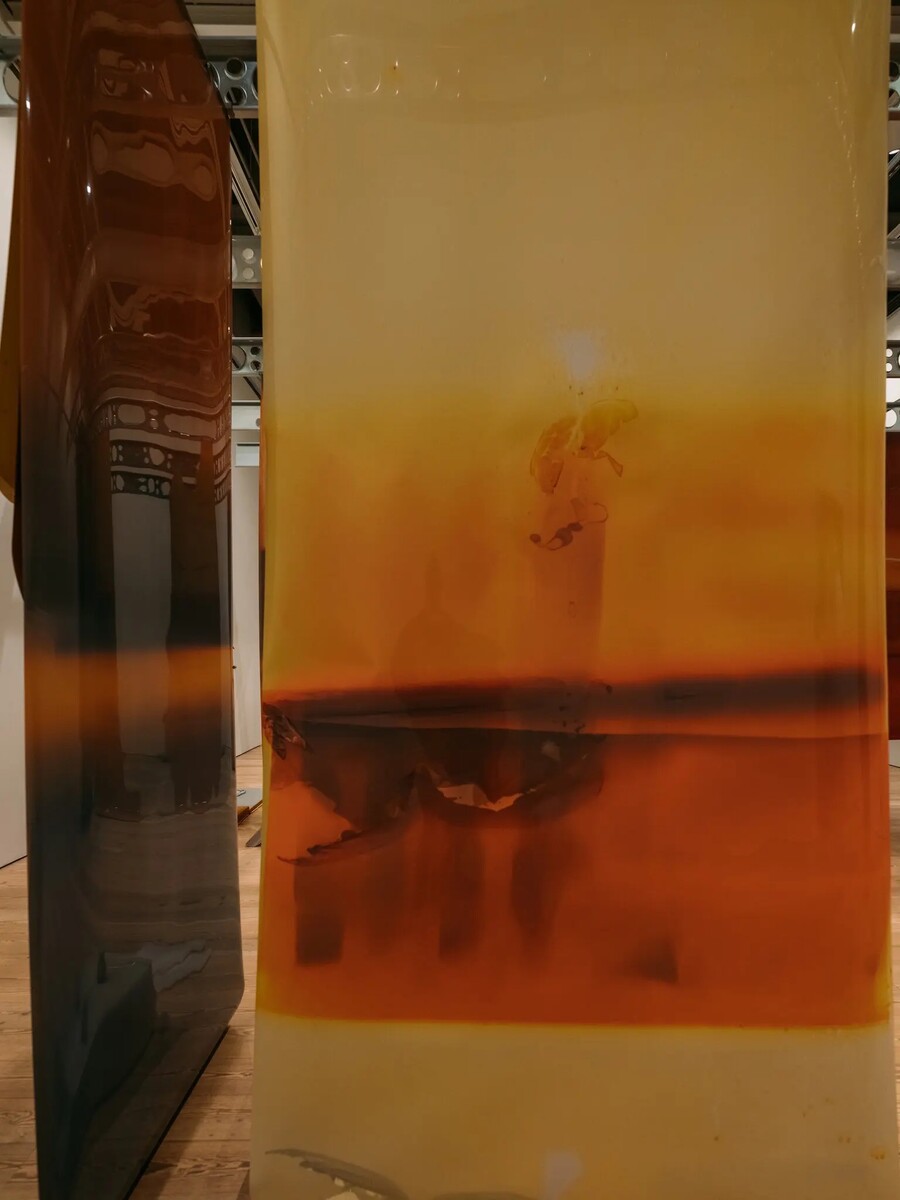
Detail from Lotus L. Kang’s “In Cascades,” “a richly sedimented, beautifully vulnerable installation in a perpetual state of becoming,” Jason Farago writes.Credit…Charlie Rubin for The New York Times
In that vein, the most compelling works in this year’s show come from two women, both in their 30s, who do not purport to have all the answers: who face the challenge of form head-on, and who embrace the freedom of art as the true act of rebellion. One is the Canadian-born New Yorker Lotus L. Kang, an artist of rare precision, whose installation “In Cascades” comprises long, broad sheets of exposed film untreated by fixing chemicals. Subtly strewed aluminum casts of leaves, roots and even anchovies lie on the floor, or else on tatami mats sheathed in sheets of pale silicone. The draped, bruised film, still light-sensitive, will streak and fog over the show’s run from the glare and humidity of the museum, while magnets and further small casts of glass tie everything together into a richly sedimented, beautifully vulnerable installation in a perpetual state of becoming. The other is Diane Severin Nguyen, an incisive young photographer and video artist, whose 67-minute film “In Her Time (Iris’s Version)” proposes a vibrant case study of digital-political bafflement and the hazards of projecting the present onto the past. Shot on a gigantic Chinese backlot usually used for nationalist epics, this profound, sometimes darkly comic work centers on a young actress struggling with her role in a (fictional) movie about the Nanjing Massacre, one of the worst atrocities of the 20th century; Nguyen also intercuts behind-the-scenes phone footage of the actress-playing-the-actress, until history, cinema, propaganda and selfie opportunities are just a hall of mirrors. She understands that to work through past crimes and present inequities takes much more than sloganeering, and that our speculative visions of resistance and renewal might serve the dominant order quite fine.
Travis Diehl: Is this Biennial a Mirror, or a Window?
Does art show you what you want to see, or frame what you don’t? Is it a mirror or a window? Three flickering neon signs on metal stands in the latest edition of the Whitney Biennial, poised at the west end of the museum’s fifth floor, crystallize this question.
The title of the 2024 piece, by Demian DinéYazhi’ — a Navajo artist, poet and activist — summarizes their imperative text: “we must stop imagining apocalypse/genocide + we must imagine liberation.” The sentences face the Hudson piers through the building’s tall windows; you see the letters mirrored in the glass, you can walk around the signs and read them, but it seems like the work’s intended audience is waiting at a stoplight on 11th Avenue or jogging along the waterfront: the world out there.
From the ground, though, looking up, the work is a glowing, cherry smudge — the idea of a sign, but illegible. And what could be the most incendiary political declaration in this biennial — pertinent to what the artist, on the wall text, calls “Indigenous resistance movements” as well as human crises around the globe — feels buffered and small. A huge statement in tiny letters. It’s emblematic of a show that can’t seem to decide who or where its audience is, who needs to hear its message, or whether it should have a message at all. The Whitney Biennial once showcased the current state of art. Now, the internet does that. But as recent biennials’ knack for controversy proves, the show still registers the cultural and civil mood of its self-selecting audience. This year, with political strife crackling in the air (but was there ever a peacetime biennial?), the art feels mostly riskless. It’s careful. It’s quiet, often delicate. The artists and collectives have lots of space, and many have their own rooms. The world outside is combative and chaotic — if art is your refuge, this biennial is for you.
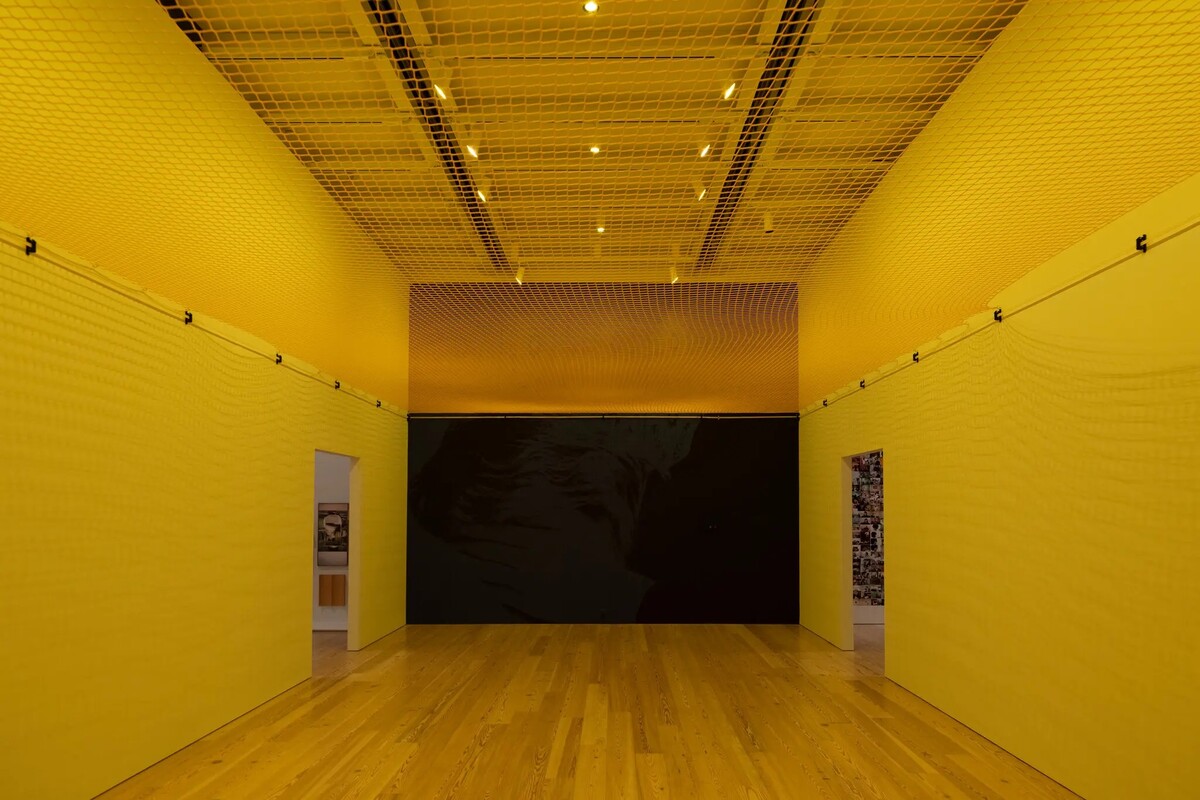
P. Staff, “Afferent Nerves,” 2023. A tense installation ensnares visitors beneath toxic yellow light, an orange net and a sizzling electrified strip (a safe distance above their heads).Credit…Charlie Rubin for The New York Times
It will also appeal to those who want to hear from marginalized voices, an area where museums are making up for lost time. (Even including the film program, there will be far more white men reviewing this biennial than are in it.)
And, if you like, it will affirm your beliefs about the evils of racism and colonialism. This speaks to our antagonistic culture of book bans, anti-queer legislation and fearmongering politicians — no wonder folks withdraw into insular conversations with like minds. Past biennials used art like a window. This show tends to be a mirror.
Should art comfort? A tense installation by the Los Angeles artist P. Staff, directly off the sixth-floor elevators, ensnares visitors beneath toxic yellow light, an orange net and a sizzling electrified strip (a safe distance above their heads). Nearby, a sculpture by the MacArthur fellow Carolyn Lazard, of Philadelphia, in their second biennial appearance, consists of actual mirrors: a small maze of chrome medicine cabinets standing on the floor. The piece addresses you, the viewer, as someone with a body — probably one too tall to see your face in it. These works ask, “Are you comfortable?” and don’t expect you to say yes.
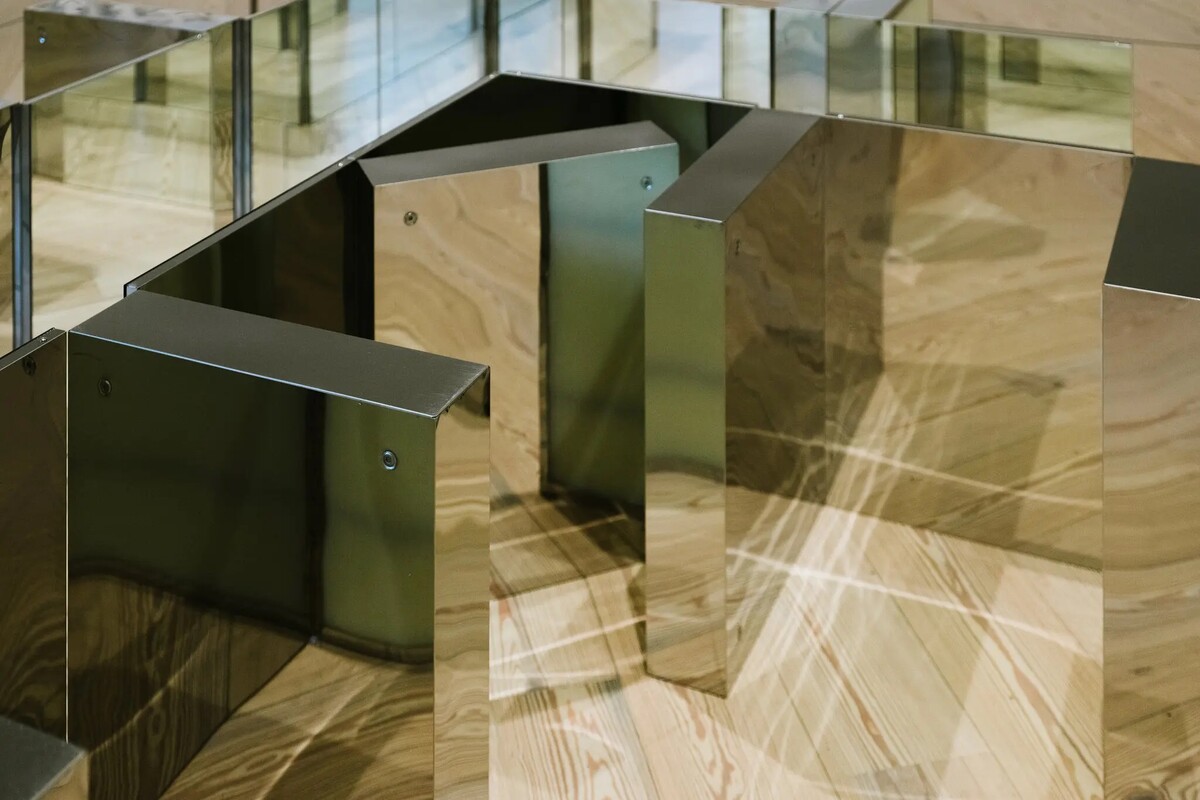
Should art entertain? Nikita Gale, of Los Angeles, contributes a modified baby grand player piano, centered in a carpeted gallery, whose hammers don’t strike the strings. The keys, stripped of ivory, jerk up and down with rhythmic thumps and taps, plonking out the jaunty rhythms of (I think) Scott Joplin’s “The Entertainer.” Spotlights in the room dim and brighten out of sync with the song. It’s a somber instrument — coy and elegiac, an eerie portrait of the musician or artist, conspicuous because of their absence.
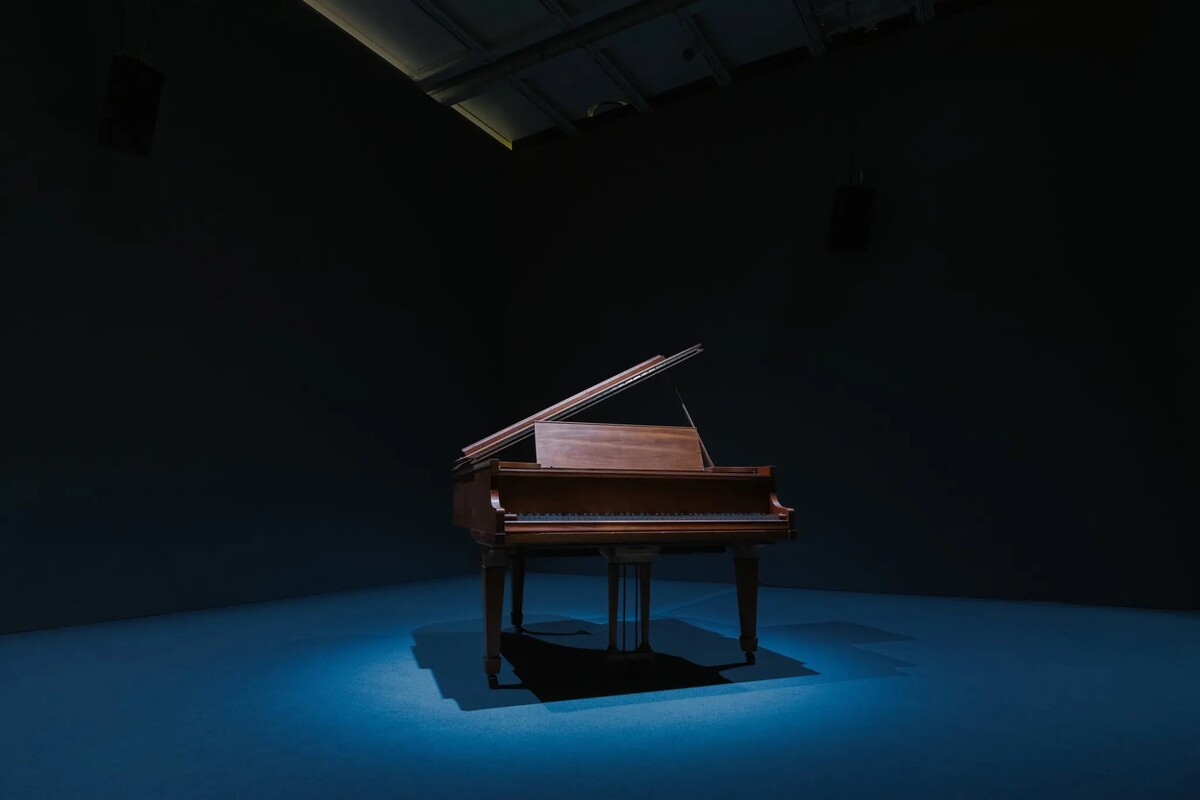
Nikita Gale, “Tempo Rubato (Stolen Time),” 2023-24. The modified player piano whose hammers don’t strike the keys is a somber “portrait of the musician or artist, conspicuous because of their absence,“ says Travis Diehl.Credit…Charlie Rubin for The New York Times
Should art confront? It can be powerful for a work to imply the presence of you, the viewer, abstractly — through common experiences like physical space, rather than relatable imagery. Charisse Pearlina Weston of New York offers a sculpture consisting of six thick sheets of smoked glass suspended from the rafters with steel cable, an austere plane angling over visitors’ heads. The sculpture suggests transparency and solidity, filtering both sight and movement — the material, corporate and slick, is a boundary you’re not meant to cross.
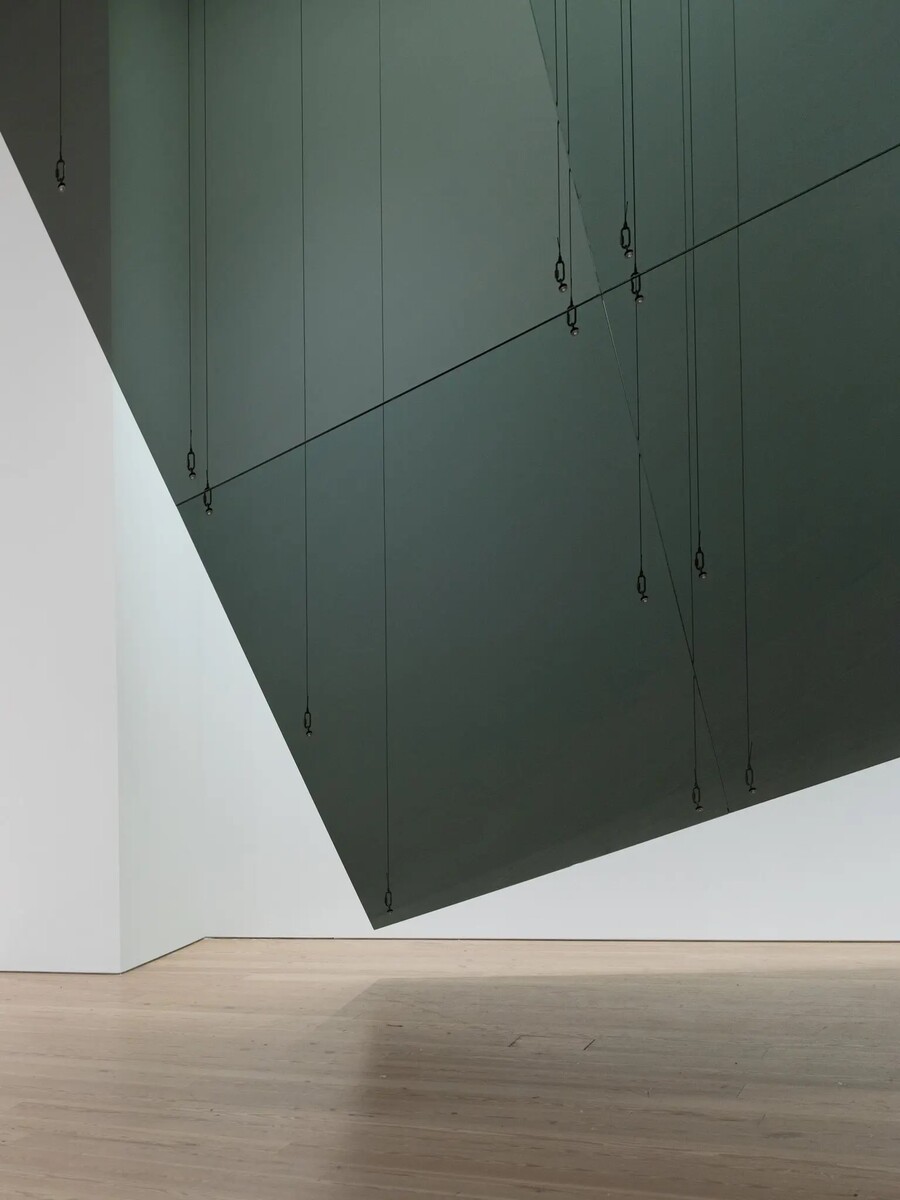
Charisse Pearlina Weston, “un- (anterior ellipse[s] as mangled container; or where edges meet to wedge and [un]moor),” 2024. “It feels like it could squish me, the way the world could,” Diehl said of the experience of standing nearby.Credit…Charlie Rubin for The New York Times
You will have a much different, even politically charged, experience of these works if you study the wall labels. You’ll learn that Gale’s piano piece means to question the limits of intellectual property, and that Lazard makes work about illness and accessibility. According to the Whitney’s text, Weston’s gray panes were inspired by a planned protest by C.O.R.E. to block access to the New York World’s Fair in 1964 — an abstraction of Black refusal. I like the piece because it feels like it could squish me, the way the world could — because it’s both human-made and unrelatable. The museum’s attempts to help viewers orient themselves according to the works’ intentions, or social causes, feel belittling. Other moments in the show find more aesthetic ways of framing the world outside: Lotus L. Kang’s installation of slowly fogging sheets of light-sensitive film drape from the ceiling, reacting to the ambient light, space and time of the exhibition. Eddie Rodolfo Aparicio’s crumbling wall of tree resin mixed with plant and animal debris absorbs gravity and sun, and is already sagging; Holly Herndon and her partner Mat Dryhurst’s A.I. project generates figures with versions of Herndon’s signature orange braids and bangs, a pleasantly weird experiment in narcissism.
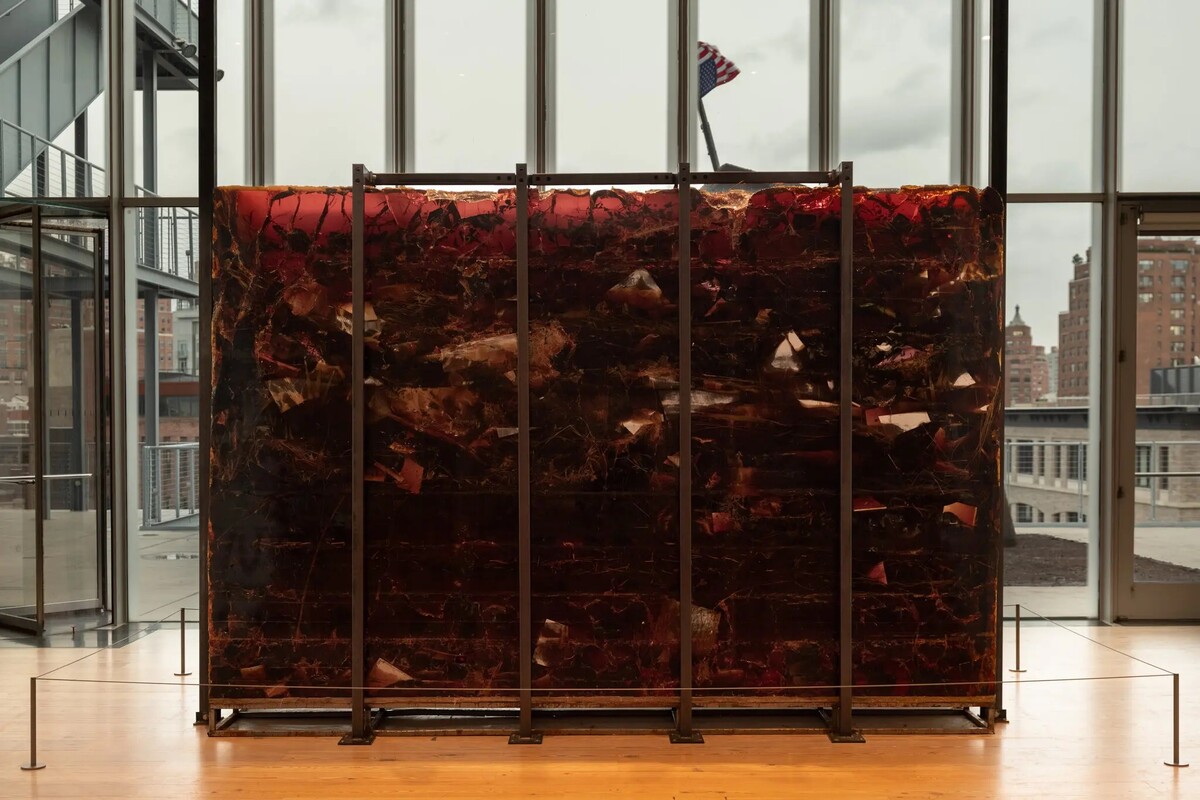
Eddie Rodolfo Aparicio, “Paloma Blanca Deja Volar/White Dove Let Us Fly,” 2024, a crumbling wall of tree resin mixed with debris that will absorb gravity and sun. The artist finds an aesthetic way of framing the world outside.Credit…Charlie Rubin for The New York Times
For a moment of reflection, though — in the meditative sense — I recommend the east end of the fifth floor. There, a mesmerizing video projection by Dionne Lee, of Columbus, Ohio, in which two hands pilot dowsing rods through tall grass, has a luxurious amount of floor space (and two sofas) to itself. The city stirs outside the high windows, the rich piano and deep vocals from a nearby installation bleed through the wall, and the pointers in the video twist and roll like antennae. Here, at least, artists are tired of making declarations. They’re searching, yearning for a new language.

